 Today’s post is a comprehensive guide to publishing your own eBook. I’ve been having some fun with the eBook industry lately and wanted to share a few things that I’ve learned.
Today’s post is a comprehensive guide to publishing your own eBook. I’ve been having some fun with the eBook industry lately and wanted to share a few things that I’ve learned.
Without further ado, here’s a complete guide to marketing, writing, formatting, and publishing your own eBook.
Market
The fact that marketing is listed as the first priority isn’t a typo. If you have no market you have no sales. That means writing your book was just a waste of time.
Failing to do the research will cripple your earnings. There are two reasons for this. The first is pretty obvious, dead niches. A dead niche has such a limited appeal that you won’t move a significant amount of product. Secondly, you need to know how the customer will find you. To quote a sage piece of advice from the U.S. Military, “If you can see it, you can hit it. And if you can hit it, you can kill it.” What the customer can’t see he can’t buy.
Rather than talking theory, I’m going to give you a real example of the power behind keyword research.
Last month I released three books. While I had found some profitable niches, I hadn’t done much keyword research. As a result it took quite some time before my sales really took off.
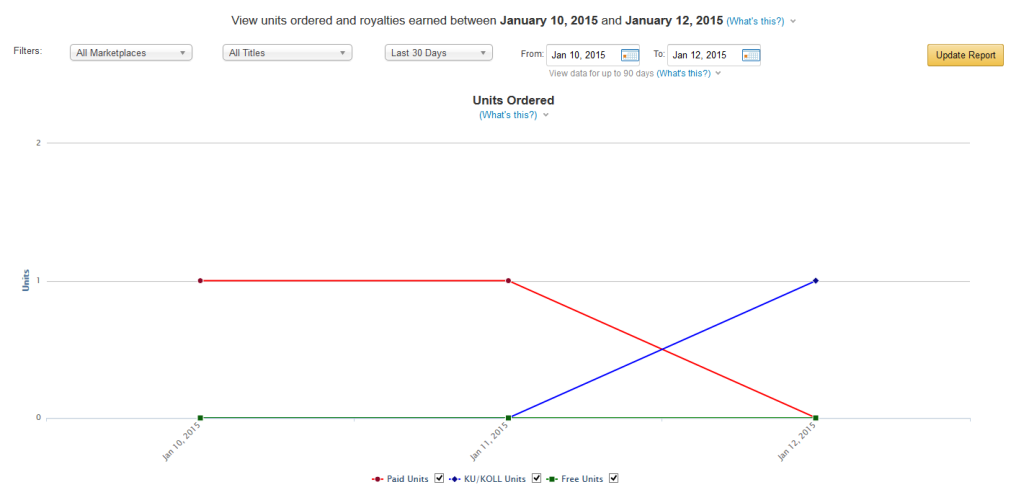
This month I started doing keyword research. I released one book that has sold better than my first two titles combined. My sales have gone up quite a bit and I’ll make about three times as much as I did during the month of January.
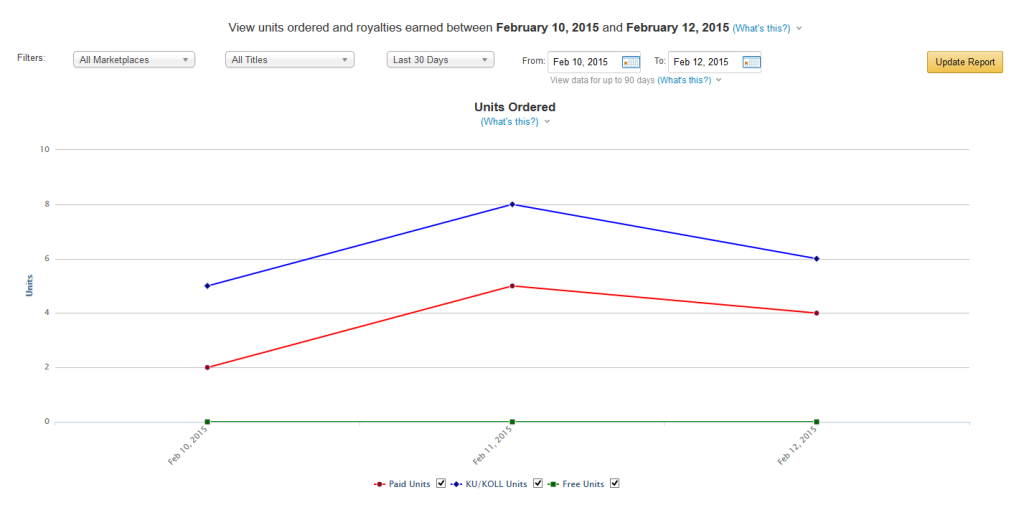
Anyone who isn’t researching their market is just wasting their time.
How to perform basic keyword research
In anticipation of someone emailing me “How due i find uh keyword,” I’m going to provide you with a little primer:
1. Download (and read) the two Copyblogger eBooks on keyword research.
Both titles are free if you sign up for their newsletter (plus you get 14 other great books and a 20 part course on persuasive writing and marketing). The entire package won’t cost you a dime and I don’t get any affiliate money from referring you. Copyblogger and its resources will teach you far more than any Internet marketing personality ever will.
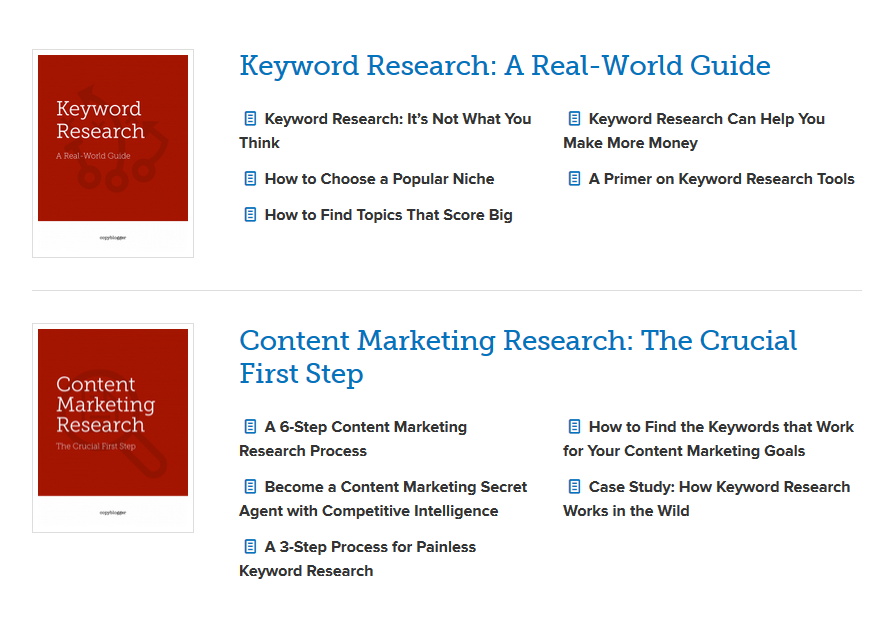
2. Find an appropriate keyword tool.
There are roughly ten bazillion keyword tools on the market. Some are great and others suck. Additionally, they very in price, ranging from free to several thousand dollars. I looked at a tool the other day that cost $5,000 a year.
Is $5,000 too much?
That depends.
If I get better at marketing, which I will, I’d have no problem buying that. Good salesmen, such as Eben Pagan, make anywhere between $50,00 and $100,000 a day. Spending five grand for an awesome research tool is like me buying a hamburger.
However, there are also plenty of great tools for people who are just starting out. And many of these are free. While it isn’t as in-depth as some of the better tools, Keyword Eye (not an affiliate link), helped me to find a phrase that was searched 17,000 times more than the term I was going to use.
And that was just from me playing around with some free software.
3. Practice, practice, practice!
Go play with your research tools for 15 minutes a day. Enter 20 different phrases and see which variants are the most popular. Or hunt down a phrase that doesn’t have much competition. It takes all of two seconds to look at a chart or graph, if you aren’t doing this you’re missing out.
Write
Before you start writing take 30 minutes to outline every chapter. Doesn’t matter if it’s fiction or non-fiction, making an outline will save you a lot of time and effort in the future. In fact I actually measured the difference in writing speed. An outlined book takes me an hour and a half to write (at the length of 3,500 words). A non-outlined book takes about three to six hours.
Without an outline you will lack focus and it will cost you money. Additionally, the quality will be greatly reduced.
You should also set a daily word count goal. I try to pen about 2,000 words a day. That means I write about 730,000 words a year. Whenever I reach my 2,000 word goal, I take an hour-long break to get ice cream and goof around. Since writing can be tedious, I suggest having some kind of similar rewards system.
Format
A lot of people have trouble formatting books. Adding front matter (that’s what an interactive table of contents is called) and back matter (which is usually a series of links that take you to the author’s website or to their other work), can be frustrating. Additionally, Kindle books often format poorly. You get weird glitches and all kinds of errors. Lines don’t space right, indents are too deep, and headers become inconsistent.
There are two ways to fix this. You either hire someone to format the book for you (which is going to cost at least $50 if you want the job done right), or you can buy a better word processor. OpenOffice and Google Drive just won’t cut it.
If you want to format things correctly I’d suggest checking out either Scrivener or the latest version of Microsoft Word. If you’re direct marketing and selling PDF books you’ll be able to get by with OpenOffice or another free tool. But anyone who plans on making Kindle content will want better tools.
Publish
Amazon’s Kindle Direct Publishing is pretty much fool-proof.
If you can fill out a form you can publish on Amazon.
To get publish your book you have to visit Kindle Direct Publishing and then sign in with your normal account.
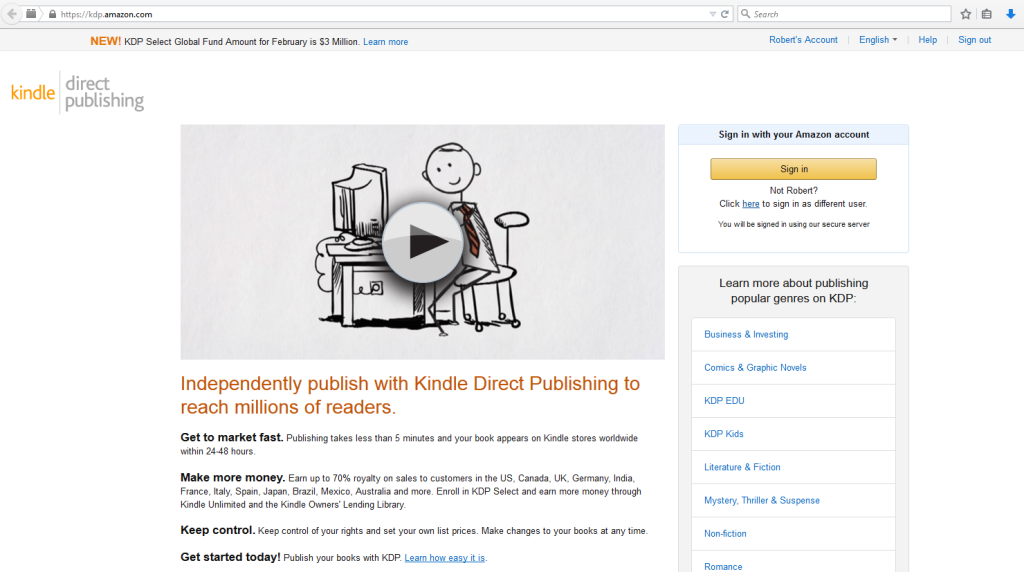
After that you’ll see an area with a button labeled “Add new title.” Click on it and you’ll be taken to the input page.

As you may note, I’ve drawn an arrow to the sidebar. Here you can find all kinds of information on self-publishing. If you have any questions or concerns along the way I’d suggest checking out the various Amazon guides. They’ll help you immensely.
Once you’re done entering all your material, you’ll need to fill out some pricing information so you can get paid. After that click the “publish” button and Amazon will have your book out in about 24 hours. It’s that easy.
A note on promotions (and why you shouldn’t do them)
Some time ago I was reading an article on eBooks. The author bragged that he’d given away “over 1,000 copies!” All the readers congratulated him. I just rolled my eyes.
Bragging that you gave away 1,000 books is like bragging that you lost money. It makes no sense whatsoever. If Joe Blow sold one eBook he’d have made more money than the big guru who gave away a thousand. A single sale is far more valuable than a million free units.
Here’s why:
1. Free units don’t mean anything.
I’ve already touched on this, but giving something away isn’t the same as selling it. Giving books away isn’t even a good indicator of demand. A lot of people will simply take something if there’s no price tag attached. This is especially true on Amazon where a large number of users gobble up everything that’s free, whether it interests them or not.
2. Promotions can actually hurt your business.
I just did a quick Google search for “Why you shouldn’t give away Kindle books.” One of the first results was some dorky lifehacker talking about his awesome productivity guide that he gave away. During the promotion he moved 41,000 units. If his book was $2.99 this means that passed up on $85,280. And you’re supposed to take business advice from this guy.
After a quick Amazon search I found this guru’s eBook. It’s current sales ranking is over 100,000. My current best seller has a ranking well below 50,000.
While there are several variables to consider, I’d cite the massive free giveaway as one of the biggest issues with this guru’s book. The 41,000 people aren’t going to buy something they already have.
3. Free is synonymous with “low value.”
When I was a kid I used to collect comic books. Every time I went to the store there were two bins. One was filled with comics that cost a dollar or less and the other was filled with titles that started at about $5.
Do you know which bin I never went to?
The dollar or less one.
While I’m sure there wasn’t a huge difference in quality, the dollar or less bin seemed like a bad deal at the time. My eight year old brain could already connect low cost with low value.
Here’s another example:
Pretend for a minute that we’re in magical wizard land and I’m going to sell you a car. There are two options on my lot, one is worth $500 and the other is worth $500,000. Without even seeing either vehicle you can already visualize which one is more valuable.
Something with a higher value sells itself.
Let’s revisit the same scenario once again. This time I tell you, “Car A is free if you can get it off the lot. Car B is $500,000 and you can cruise out of here right away.”
Car A sounds like a pile of junk, right?
Both vehicles could basically be the same, but some primitive sales techniques and a higher price tag will make one of them seem infinity better.
4. People who take free stuff and paying customers don’t always overlap.
Amazon has a whole section where you can browse for free titles. And there are all kinds of people who hang out here and download anything they come across. Getting 10,000 people to download your book on organic apple pie doesn’t mean that there was a market of 10,000 potential customers. It doesn’t even mean that 10% of the people who downloaded the book would have bought it.
You can look at products all over Amazon that have reviews like this:
“I downloaded Best Organic Apple Pie recipes because it was free, but I don’t even like pie. One star.”
Unless you have a way to gauge interest (which we’re about to get to) you’re collection shoddy data.
5. Anything you give away should still make money.
There’s an exception to the “never give people free stuff” rule: free products that still make you money.
Early on in this article I mentioned my love of Copyblogger. They gave me 16 free eBooks and a 20 part writing course. It was such a good deal that I became a lifelong fan. I buy products that they endorse, such as the theme for my website, and I recently decided to upgrade my membership and take a few seminars (earning them a cool $300).
This was an effective strategy for two reasons:
1. The free content was so good that I assumed the material they were charging for was even better.
The cheapest Copyblogger product is about $100. From there things get more expensive. Licensing the company’s software will cost you over $1,200.
Getting someone to spend $1,200 (or even $100) can be tough. But Copyblogger gives you such great content for free (those eBooks will teach you how to make a small fortune) that it instantly builds trust.
If the stuff they told you for free doubled your income, imagine what their actual products could do?
It’s a very clever tactic and the epitome of good guy marketing.
Which leads to my second point…
2. The free content was not the product.
A lot of aspiring entrepreneurs make the mistake of lumping “content” in with “product.” This blog post was written for fun, it is free to read content. There’s nothing in her that could even make me money since I decided to do away with affiliate links and whatnot.
This post is not a product since it physically cannot make me money. Which is fine here because blogging is my hobby, but it’s a terrible idea for someone trying to develop a business.
An item, be it a blog post or eBook, that does not have a means of being monetized will never be a product.
Writing one eBook and then giving it away for free is stupid, you’ve just sabotaged your own product. Not a bright idea.
Writing three eBooks and giving one away for free, as long as it entices the reader to buy the next two, is a fine strategy. That “free” book is actually bait for someone to buy the rest of your series. It has a means of monetization.
If you’re trying to make money free giveaways have to be strategic.
Here are a few other examples of a strategic freebie:
- An item that gets people to sign up for your newsletter (so that you can sell to them later).
- A product that sells something else (i.e. giving away a free eBook on construction that contains affiliate links for drills and hand saws. Or a book on blogging with a link to domain hosting packages).
- A “free” product that is unlocked once something else has been purchased (like the infamous “buy two meals get the third one free” deal that you’ll see at many restaurants).
Closing notes
Before I leave you, there are a few additional things that you should know. These don’t require a whole lot of explanation, so I’m going to write them up in a concise list:
1. Always get a professional cover.
You can get a subscription to Dollar Photo Club (not an affiliate link) to get images and then hire someone off Fiverr to actually design the cover. Higher quality works obviously require a higher quality designer.
2. Proofread your work.
A lot of people don’t edit their material. And it hurts their sales greatly. Invest a few hours into looking over your book. Nobody is going to buy from you again if your first title was an unreadable mess.
I’ve read this post four times and have probably missed half a dozen little things. You’ll never catch every mishap, but do your best and correct any errors you stumble across.
3. Ghost writers generally suck.
There’s a reason that ghost writers are making your eBook and not their own, and that reason usually involves a little word called “talent.” Hire any run of the mill “penny a word” ghost writer and you’ll get what you paid for. You’d be better off writing your own book, or collaborating with someone who knows what they’re talking about.
4. Learn to write a descriptive headline and engaging product description.
A lot of self-published authors are terrible at naming their books. Most are too vague. Naming a book IT might work for Stephan King, who is backed by a small army of publicists and marketers, but it probably won’t work well for you.
I frequently stumble on books with vague titles and poor product descriptions. Someone will write a horror novel and call it Terror, then they’ll write a sparse description like “Something horrible is here.”
That doesn’t tell me anything about the characters, plot, or setting.
A good description should be at least 150 words long. It needs to tell the reader what the book is about and entice them into buying it. Go look at all the Amazon bestsellers. Read their descriptions, you’ll know exactly what you’re getting. A Tony Robbins book is going to tell you what you’ll learn and who you’ll learn it from. A Stephan King book will introduce both the hero and the monster as well as the setting.
Tease the reader and get their interest.
5. Look at what sells.
eBook gurus will tell you to write how to books. And that’s because eBook gurus don’t know how to actually make money. They earn a living by farming suckers with various get rich quick schemes.
The difference between me and some Internet marketer is that I can write a 3,000 guide to self-publishing without having to sell you anything. Why? Because my money comes from my actual businesses. There are at least 10 points where I could have plugged an affiliate link, but I didn’t because I don’t need the extra cash.
If you listen to the gurus you’ll be writing books like How To Cure Acne or How To Install A New Garage Door. If you use your brain and look at what’s actually selling you’ll be avoiding those cheesy “How To ___” categories. With a few exceptions they’re dead niches.
Final thoughts
While I can’t guarantee that you’ll make a fortune in the eBook industry, I do feel that it is a fairly profitable venture. Making a few hundred dollars off a handful of titles is surprisingly easy. This month alone I’ll make anywhere between $500 and $600. And I’ve only been doing this for two and a half months.
If you’re smart you could easily do just as well if not better.
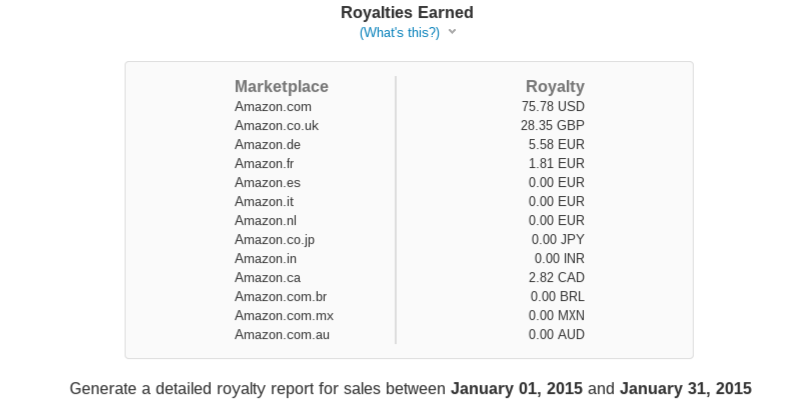 ear I had over $1,500 stolen from me. Clients never paid or just disappeared when presented with a bill. Most of it was from freelancing and copywriting, but a fairly significant portion, several hundred dollars, came from bloggers I know.
ear I had over $1,500 stolen from me. Clients never paid or just disappeared when presented with a bill. Most of it was from freelancing and copywriting, but a fairly significant portion, several hundred dollars, came from bloggers I know.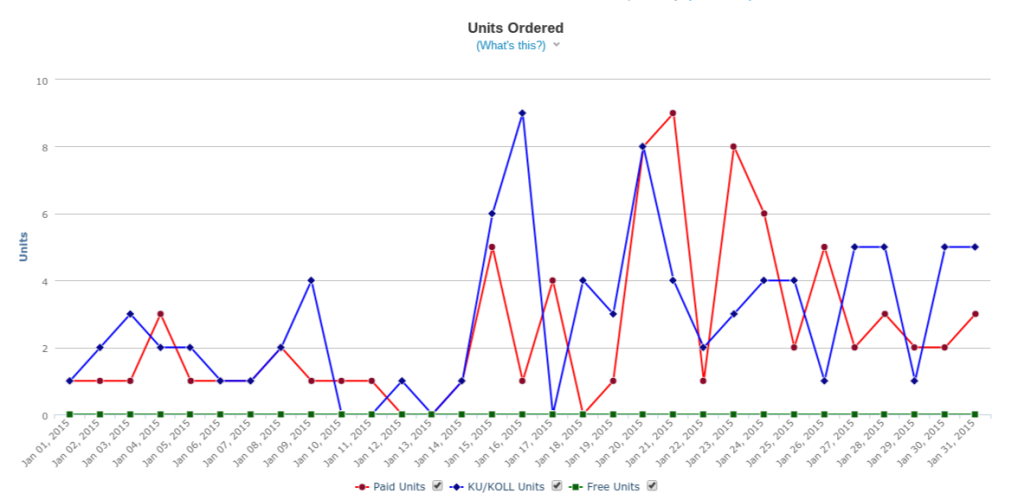
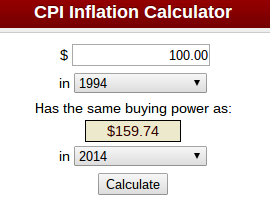
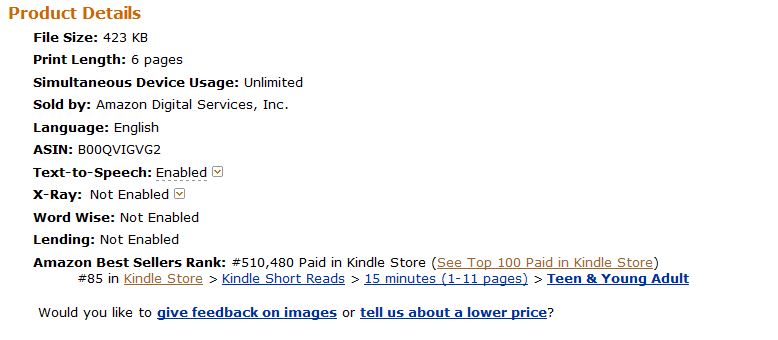
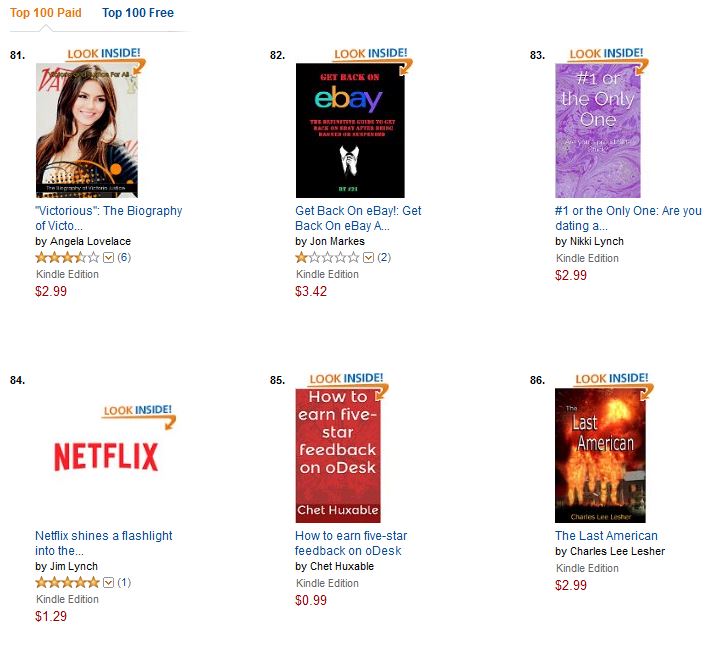

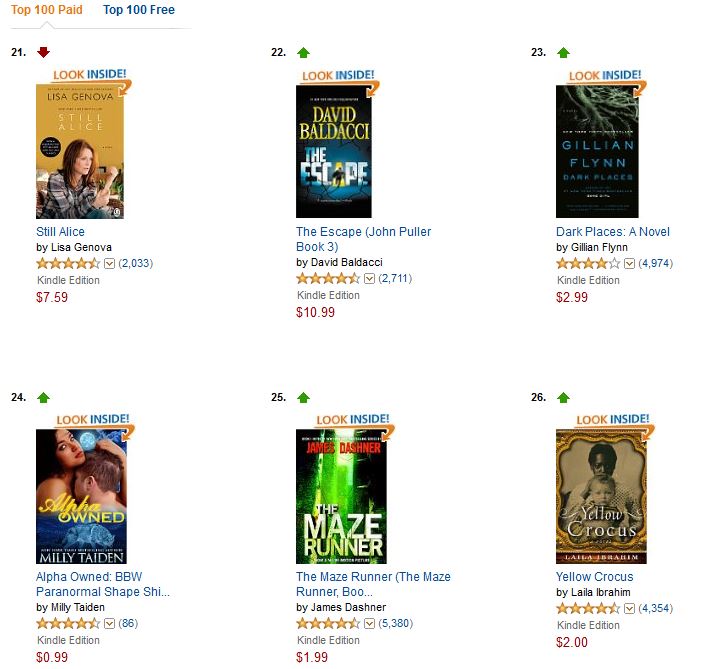
 The French has a phrase called “L’appel du Vide,” or “Call of the Void.” Roughly translated, it’s the urge to jump from high places. Mountaintops and such. depending on who you ask L’appel du Vide is either a form of self-destruction or self-expression. Suicide or adventure.
The French has a phrase called “L’appel du Vide,” or “Call of the Void.” Roughly translated, it’s the urge to jump from high places. Mountaintops and such. depending on who you ask L’appel du Vide is either a form of self-destruction or self-expression. Suicide or adventure.
 During my
During my 